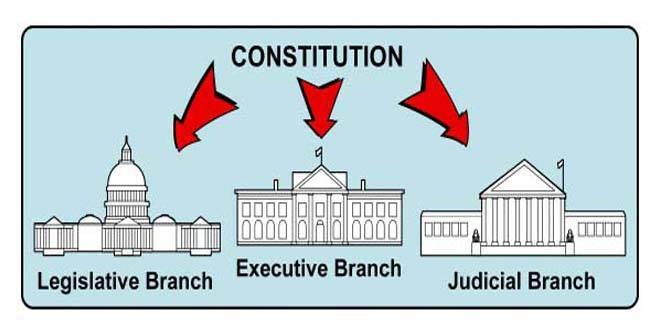Table of Contents
INTRODUCTION – DOCTRINE OF SEPARATION OF POWER
The doctrine of separation of power is the second constitutional principle which played an instrumental role in the growth of administrative law. Government power can classified into three categories i.e. legislative, executive, and judicial. Executive is responsible for the formulation, and execution; the legislature is responsible for approval of legislation and security of the executive; judiciary is responsible for securing and observance of law. Separation of three branches is essential to secure the different forms of accountability i.e. legal, political, and financial accountability.
MEANING – DOCTRINE OF SEPARATION OF POWER
It is the doctrine that has exercised the minds of many people.
The doctrine of power means:
- The executive should never exercise the judicial or legislative power;
- Legislative shall never exercise the judicial or executive power;
- Judicial branch should never exercise the executive and judicial power.
The aim of doctrine is to guard against tyrannical and arbitrary powers of the states. If all the power is concentrated in one and in the same organ this would give rise in danger, and interpret them in arbitrary fashion, without any external control.
PRACTICE IN INDIA
In India, like England there is parliamentary form of government where executive is very important part of legislature. So, the doctrine of power is separations of powers is not followed strictly. Article 53[1] specifies that the executive power of the union is vested in the President of India and shall be exercised by him directly or through officers subordinate to him in accordance with the constitution.
Article 73 states that the power of the executive shall be co- extensive with that of legislature. Article 74 guarantees that the executive power shall be exercised by the president under the aid and advice of the Council of Ministers. Under Article 32, 226 and 136 the judiciary by means of judicial review can strike down any law made by the Parliament or any administrative actions on the grounds of ultra vires and violation of constitutional principles.
RELEVANCE OF THE DOCTRINE OF SEPARATION OF POWERS IN MODERN ERA
Through the doctrine of separations of powers cannot be applied strictly to any modern government, this does not mean that it has no relevance in today’s world. The logic behind this doctrine is still valid, and the logic is of polarity rather than strict classification –meaning thereby that the center of authority must be dispersed to avoid absolutism.
CRITICISM OF THE DOCTRINE OF SEPARATION OF POWER
The doctrine of separation powers was very sound, many defects surfaced when it was sought to be applied in real life situations.
- Legislature, executive and judicial functions are not watertight compartments. It is not easy to draw a demarcating line between one power and another with mathematical precision.
- It is impossible to take certain action. If this doctrine is accepted in it’s entirely.
- Modern state is a welfare state and it has to solve many complex problems, it is possible to stick to this doctrine.
- Doctrine was liberty and freedom of an individual, but it cannot be achieved by division of function and power.
Author: kanika panwar,
IDEAL institute of management and technology & school of law, 2nd year/BALLB

